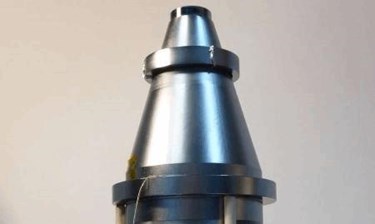The Sharpest Laser Beam In The World

Physikalisch-Technische Bundesanstalt is developing a laser with a line width of only 10 mHz
No one has ever been so close to the ideal laser. In theory, a laser has exactly one color (frequency or wavelength). In reality, however, there is always a certain line width. The laser, the researcher of the Physikalisch-Technische Bundesanstalt (PTB) has now developed together with US researchers from the JILA, a joint institute of the American National Institute of Standards and Technology (NIST) and the University of Boulder, Colorado Of only 10 mHz a new world record. This precision is useful for various applications such as optical atomic clocks, precision spectroscopy, radio astronomy, and relativity theories. The results are published in the current issue of Physical Review Letters.
He was initially considered a solution without problem: the laser. But that is a long time ago. More than 50 years after the first technical realization, the laser of our life is an integral part of our lives. Laser light finds countless applications in industry, medicine and information processing; Many areas in research and measurement have been revolutionized by the laser or even made possible at all.
One of the outstanding characteristics of the laser is the great coherence of the emitted light. For the researchers, this is a measure of the clock width and the line width of the light wave. Ideally, laser light has only a fixed wavelength or frequency. In practice, however, the spectrum of most laser types is a few kHz to a MHz wide - for many precision experiments that is not good enough.
Therefore, research is being carried out intensively on ever better lasers with higher frequency stability and smaller line width. In a joint project with US colleagues from the JILA in Boulder, Colorado, a laser was developed at the PTB, whose line width sets a new world record with only 10 mHz (0.01 Hz). "The smaller the line width of the laser used, the more precisely the frequency of the atoms in an optical atomic clock can be determined. With the new laser we can therefore decisively improve the quality of our watches ", explains PTB physicist Thomas Legero.
In addition to the extremely small line width, he and his colleagues were able to measure a previously unrecorded clock frequency of the laser light. Although the light wave oscillates almost 200 trillion times per second, it does not get out of the clock with the new laser until after about 11 seconds. The radiated perfect wave train has already reached a length of about 3.3 million kilometers. This is nearly ten times the distance Earth - Moon.
Since no comparable laser was available worldwide, the researchers at PTB had to build two such laser systems: Only by comparing these two lasers could the outstanding properties of the light be detected.
The heartpiece of the lasers is a Fabry-Pérot resonator made of silicon, each 21 cm long. It consists of two opposing high-reflecting mirrors, which are fixed to one another by a spacer in the form of a double cone. As with an organ pipe, the resonator length determines the frequency of the oscillating wave, in this case the light wave in the resonator. A special stabilization electronics ensure that the light frequency of the laser always follows the natural oscillation of the resonator. The stability of the laser and thus its line width depend only on the length stability of the Fabry-Pérot resonator.
The PTB researchers had to isolate the resonator almost perfectly from all environmental influences, which can change its length. These include temperature and pressure fluctuations, but also external vibrations caused by seismic or sound. This has been so successful that only the thermal movement of the atoms in the resonator remains. This so-called thermal noise corresponds to the Brownian movement and represents a fundamental limit to the length stability of a body. Its size is determined by the resonator materials used and the temperature of the resonator.
This is the reason why the researchers have made the resonator from a silicon single crystal that is cooled to a temperature of -150 ° C. The thermal noise of the silicon body is so small that the observed length fluctuations result only from the thermal noise of the dielectric mirror layers of SiO 2 / Ta 2 O 5 . Although the mirror layers are only a few micrometers thick, they dominate the length stability of the resonator. Overall, however, the resonator length varies only in the range of 10 attometers. This length corresponds exactly to the ten-millionth part of the size of a hydrogen atom. The resulting frequency variations of the laser are therefore less than 4 × 10 -17 of the laser frequency.
The new lasers are now being used at the PTB in Braunschweig and at JILA in Boulder to further improve the quality of optical atomic clocks and to carry out new precision measurements on ultra-pure atoms. In the PTB, the ultra-stable light is already distributed over optical fibers and used by the optical atomic clocks in Braunschweig. "In the future, the light will also be distributed within a European network. This makes it possible to make even more precise comparisons between the optical clocks in Braunschweig and the watches of our European colleagues in Paris and London, "says Legero. In Boulder a similar route is planned between the JILA and various laboratories of the NIST.
For the future, the researchers still see further possibilities for optimization. With novel crystalline mirror layers and lower temperatures, the disturbing thermal noise can be further reduced. The line width could then be even less than 1 mHz.
Source: Physikalisch-Technische Bundesanstalt
